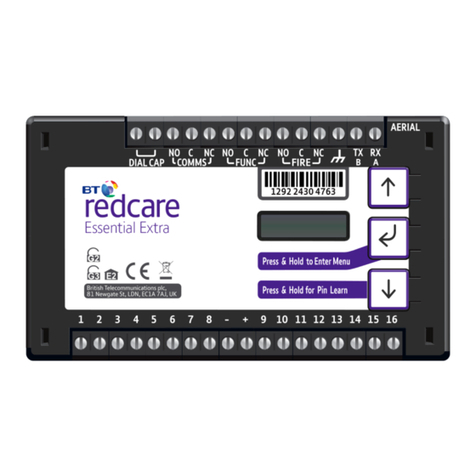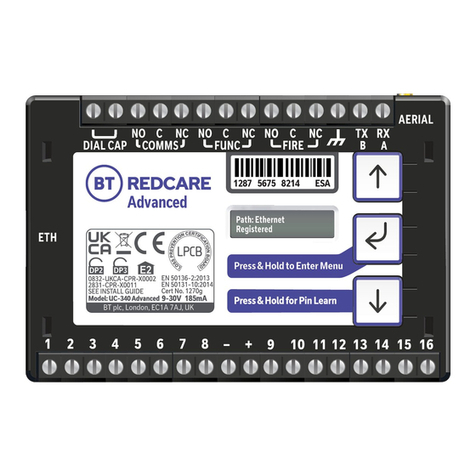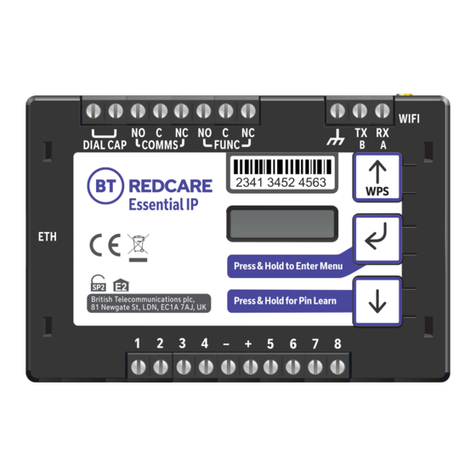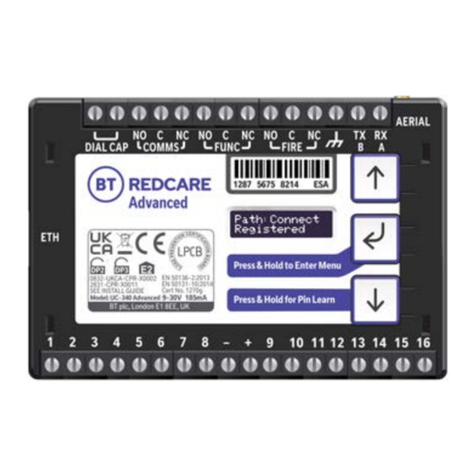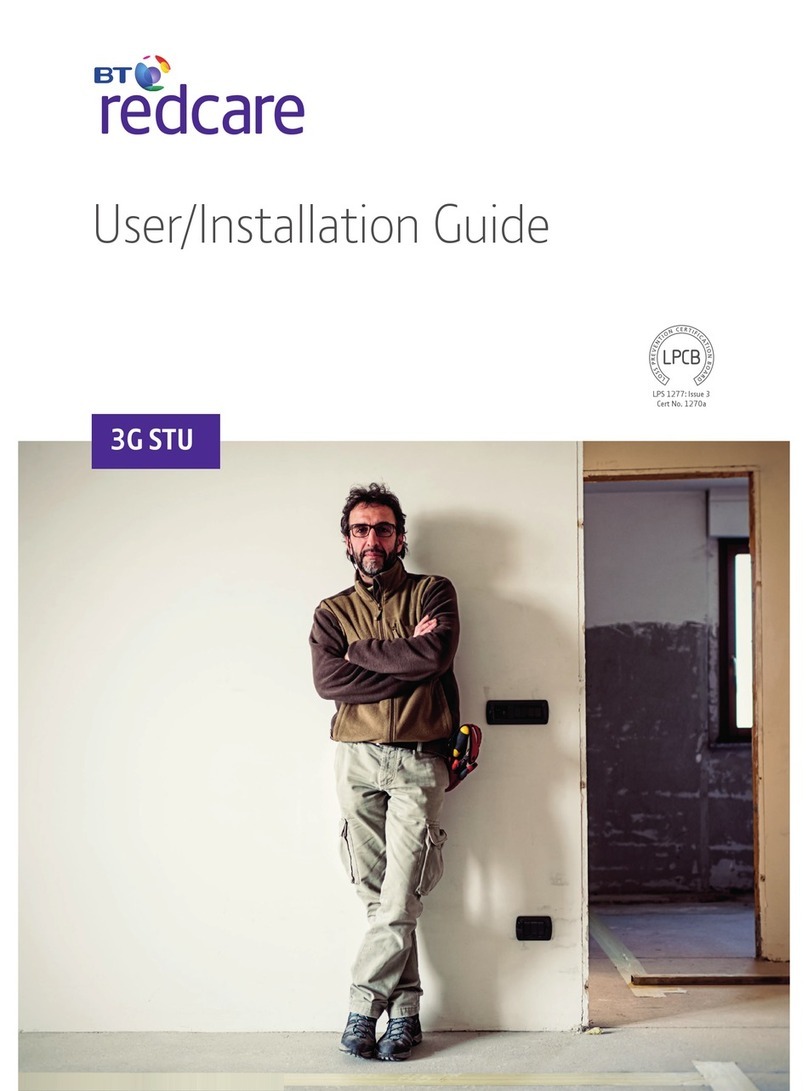REN
The Ringer Equivalence Number (REN) for the 5G STU is 1.0. As a guide to the number of apparatus that can be
simultaneously connected to a line, the sum of REN values for each apparatus should not exceed 4.0. A BT provided
telephone is assumed to have a REN value of 1.0 unless otherwise marked. If the 5G STU is used with an MCD, the
combined REN will be 1.5.
Training Courses
BT Redcare offer a free training course for installers of the BT Redcare service. For further information call General
Enquiries Tel: 0800 800 628*.
* Calls are free to this number from BT landlines and BT payphones. However, they are not free to call from mobile phones - the costs will vary between service providers.
5G GSM STU Inputs
The STU has up to 11 screw terminal inputs plus tamper (T) & AC fail (F) for connection to the monitored equipment such
as an alarm panel (3 inputs on the Fire STU). The alarm inputs are triggered by changing their voltage state.
At default a positive voltage applied to the input will trigger an alarm condition. The polarity of the inputs can be
configured using the PP (Pin Polarity) menu.
For fire alarm panels the fire alarm notification output must be connected to the STU input numbered pin 1.
Pin 1 has an associated fire alarm acknowledgement message, received via the relay output labelled RPS.
A+ Terminals
The STU has 4 terminals marked A+. These terminals provide a 10K resistive connection to +V and can be used to trigger
the alarm inputs through relay contacts if required.
Output Relays
Three output relays are provided: Control, Return Path Signalling (RPS), and Line Fault. The use of any, or all, of these
functions is optional. For a basic installation these outputs are not required.
Note: If an output is to be connected to a device which produces transient voltages, such as a bell, the device should be
suppressed using a suitable protection diode.
For fire alarm installations the indication of ‘acknowledgement of fire alarm’ and ‘SPT fault’ messages must be provided by
the fire panel into which the SPT is mounted.
System fault indications which are notified by the 5G Fire line fault output relay ‘LF’ must be latched by the fire panel as
required by EN 54-21.
Control Output Relay (CTRL)
This relay can be switched on or off by the Alarm Receiving Centre (ARC) operator by sending an output ON or output OFF
command to the STU through the BT Redcare network.
The output can typically be used to remotely reset an alarm panel, or to operate other devices such as lights or door
latches at the site.
Page 4

